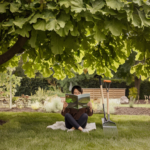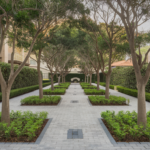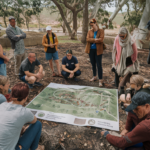MY Tips
How to Avoid Disputes with
Your Clients as a Landscape Designer in NSW
Strengthen client relationships and avoid disputes with clients using our practical guide.
Discover strategies to minimise misunderstandings.
As a landscape designer in New South Wales, building strong, collaborative relationships with clients is essential to ensure smooth project execution and avoid disputes. With clear communication, proper documentation, and adherence to NSW-specific regulations, you can create beautiful, functional landscapes that meet your clients’ expectations.
This guide provides practical strategies to minimise misunderstandings and maintain positive client relationships throughout the design and construction process, with links to useful resources for compliance and planning.
1. Start with Clear Communication
Effective communication from the outset helps prevent disputes later. Provide a discovery consultation to gather project details and clarify the client’s vision. Tools like email summaries ensure that both parties are aligned after each meeting. Establish communication preferences to keep clients updated through every stage of the project.
Avoid Disputes with Clients’ Tip:
Use templates or meeting minutes to confirm key discussions. You can find consultation and client-briefing templates through AILDM or The Landscape Association.

2. Set the Right Expectations Early
Managing expectations helps clients understand the realities of landscape projects, including potential constraints. Be upfront about regulatory requirements, budgets, and timelines, and explain how external factors, such as council approvals, may impact the project.
Explore:
Review the NSW Planning Portal here for relevant council planning instruments such as LEPs and DCPs to inform your project planning.
3. Provide a Detailed Scope of Work and Contract
A well-defined scope of work ensures all parties know what to expect. Include deliverables, timelines, payment schedules, and any subcontractor involvement. Contracts should cover key aspects, such as warranties and dispute resolution procedures. Providing clients with time to review documents without pressure builds trust and transparency.
Resource:
Refer to Fair Trading NSW for guidelines on contracts, warranties, and building disputes.

4. Prepare a Site Coverage Plan
Including a site coverage plan in the design phase ensures compliance with council regulations on hard-to-soft landscape ratios. For example, the Ku-ring-gai Council DCP mandates at least 50-55% soft landscaping for residential properties. This includes permeable surfaces like garden beds and grass, while hardscapes, such as driveways and paved areas, should be minimised.
More Information:
Learn about site coverage ratios and compliance from the Ku-ring-gai Council’s DCP document.
5. Use Checklists for Smooth Project
Execution
Staying organised with checklists ensures that no important details are overlooked. Your Landscape Journey offers practical tools to streamline the process, such as compliance checklists, client approval forms, and project timelines.
Explore Further:
Use the NSW Planning Portal for tree management plans and bushfire regulations that may affect your project: Tree Management, Bushfire Protection
6. Manage Changes Proactively
Unexpected changes are common in landscape projects. Document any modifications with a change order form, detailing cost and timeline implications. This keeps the project on track and ensures transparency with the client.
Resource:
For tips on managing construction changes, refer to Standards Australia for the latest on project management standards.
7. Maintain Professionalism Throughout
Your behaviour and professionalism directly impact the client relationship. Be punctual, respond promptly to queries, and maintain open lines of communication throughout the project. Consistently professional behaviour fosters trust and makes clients feel valued.
Resource:
Membership with professional bodies like AILDM or The Landscape Association strengthens credibility and reassures clients about your expertise.

8. Address Disputes Early
By focusing on clear communication, proper documentation, and adherence to local regulations, you can avoid disputes and maintain positive relationships with your clients. Offering a structured approach to scope, timelines, and changes ensures smooth project execution. Additionally, staying informed on NSW planning policies through tools like the NSW Planning Portal helps you meet compliance standards efficiently.
To further refine your project management and strengthen client relationships, explore the templates and tools available through Your Landscape Journey. With proactive planning, professional behaviour, and clear processes, you can deliver exceptional results that exceed client expectations and avoid disputes.
Conclusion
Even with the best planning, disputes may arise. If issues occur, address them immediately through open dialogue. If resolution proves difficult, you may consider professional mediation. Including a dispute resolution clause in your contract ensures both parties are clear on how conflicts will be managed.
Mediation:
For mediation support, visit Fair Trading NSW or consider working with a landscape industry mediator.
Our recommendations and information provided in our articles, blog and on this website is intended to be educational and informative only. It is at no time to be relied upon as personal advice for your own situation. While we try our best to ensure that the information is accurate, sometimes it may not be suitable or correct for your particular circumstances or the products or services you may choose to purchase.
Any comments, guidance, or information on this website is our own view and based on our experience and we do not provide any guarantees, warranties relating to any aspect of the information, including but not limited to any reliance on the safety or security of any landscape recommendations, renovations, designs, plant use or any particular installations. We hope you find it helpful but please be aware that it may not be suitable for your situation, location, surroundings or other specific needs. This information is offered in good faith and it is not specific to any one person or any personal circumstance. You should contact us directly so we may review and assess your own situation to be able to provide recommendations specific to your own requirements, particularly if you are in a fire, drought or other sensitive area.
We hope you understand that for this reason, we are not to be held liable for any decisions you make based on any of the information, views, or recommendations on our website and in our blog articles and any consequences, as a result, are your own.
The information shown and posted on this website or expressed by either the moderator is the view of the person(s) posting only and is intended to be examples only and not advice for you personally.
Any decisions or information on this website you decide to use, read or act upon is done at your own risk and you shall indemnify yourlandscapejourney.com, its directors and employees for any and all claims whether resulting directly or indirectly from your actions.





